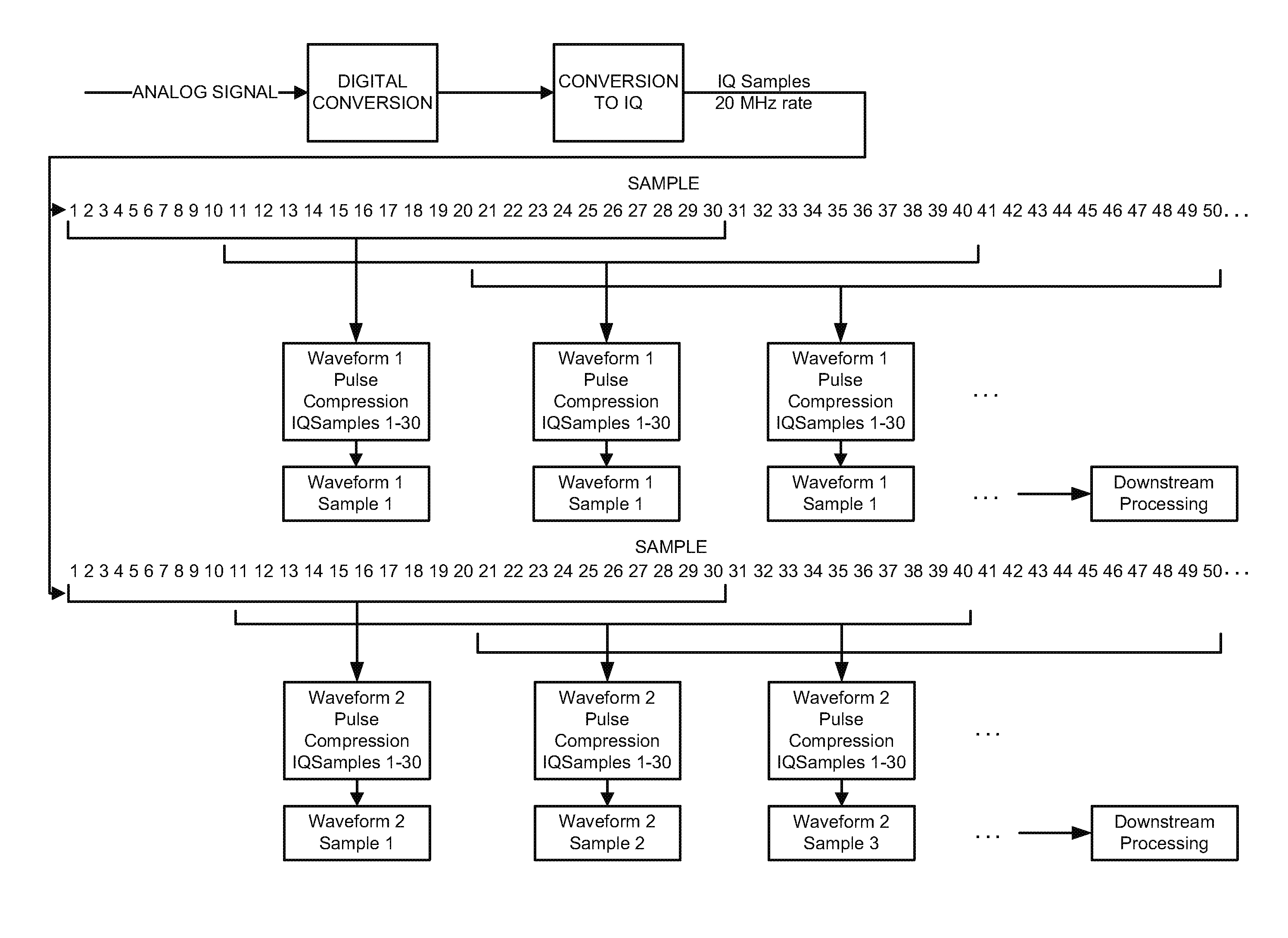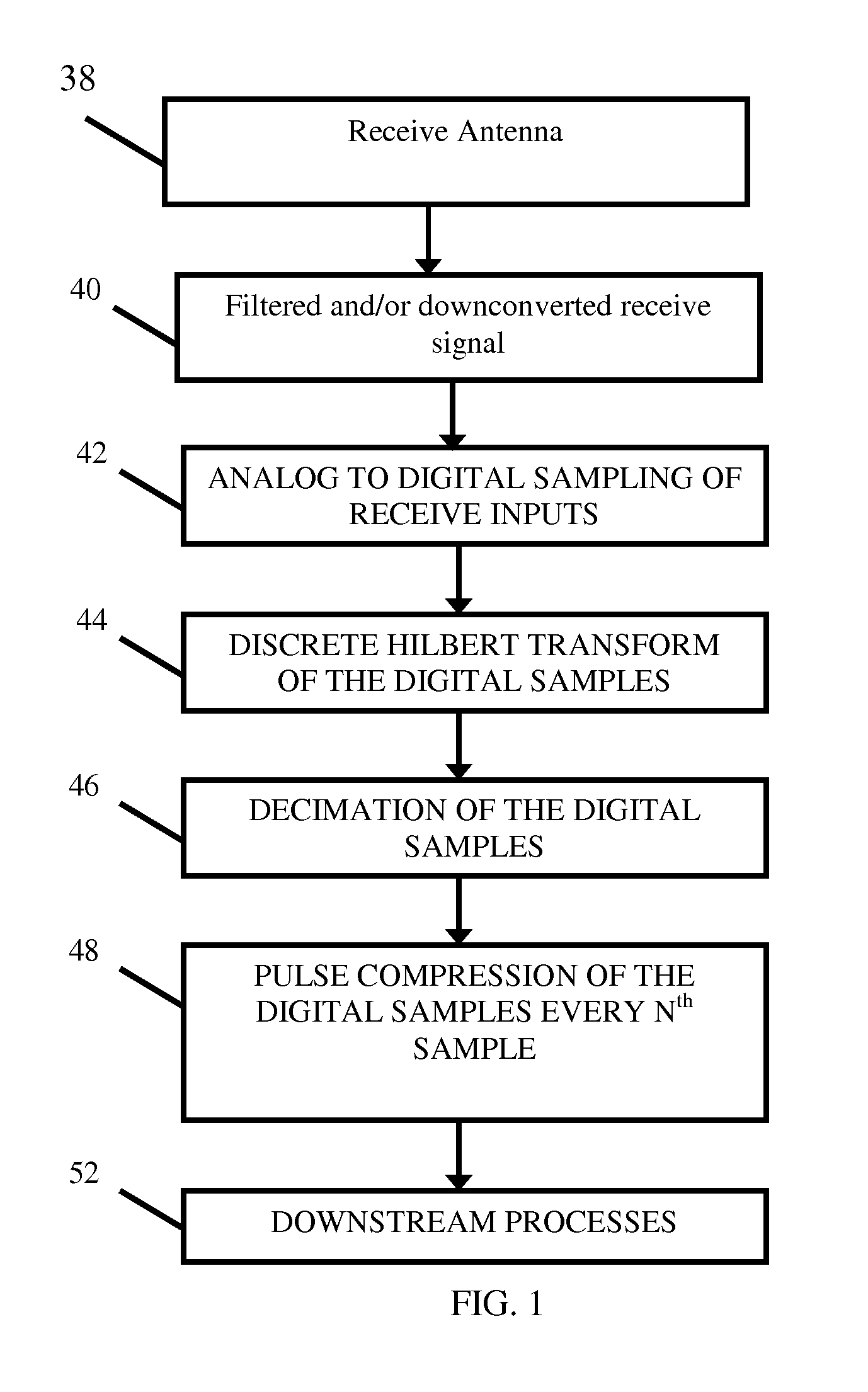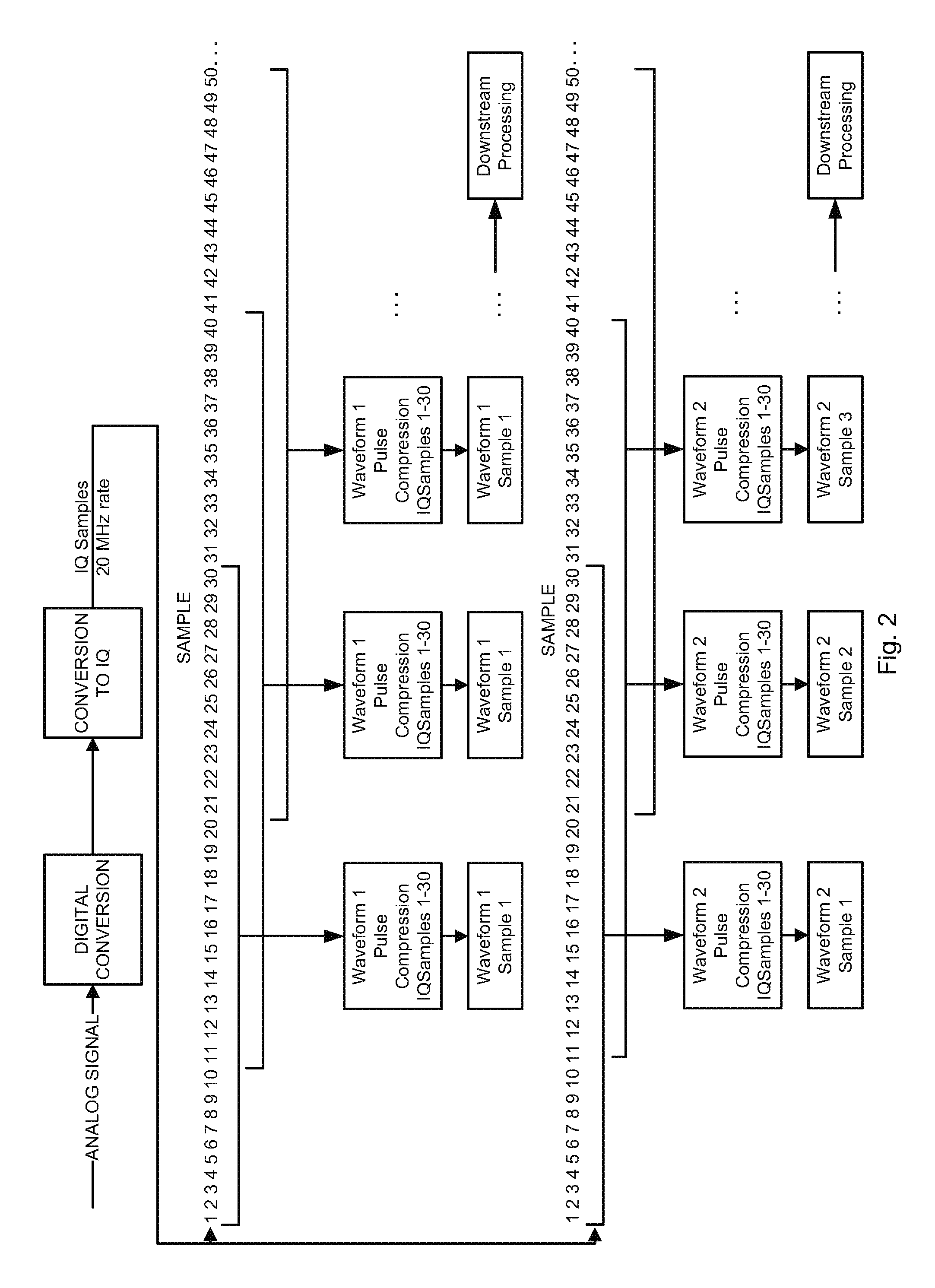Simultaneous multi-frequency signal processing method
a signal processing and simultaneous multi-frequency technology, applied in the field of signal processing, can solve the problem that waveforms of different frequencies typically require a very large amount of processing power to separate, and achieve the effects of reducing processor requirements for receivers, reducing processing size requirements, and reducing weight and power requirements
- Summary
- Abstract
- Description
- Claims
- Application Information
AI Technical Summary
Benefits of technology
Problems solved by technology
Method used
Image
Examples
example 1
[0026]This Example describes the examination of a set of parameters according to one embodiment of the present invention. Consider a case for which a multi-static radar is required to receive four frequency modulated waveforms of 1.5 microseconds in duration, of 2 MHz bandwidth, with the lowest and highest frequency signal separated by 18 MHz in center frequency (resulting in a peak frequency separation of 20 MHz). The individual waveforms are made separable in the pulse compression, which is executed using a data sampling rate of 20 MHz, and of a width of 30 samples at 20 MHz (corresponding to the pulsewidth). However, each individual transmit bandwidth is 2 MHz, allowing for the correlation to be calculated at every 10th data point. This reduces the total data rate by a factor of 5, but allows for the separation of the return from each individual waveform.
PUM
 Login to View More
Login to View More Abstract
Description
Claims
Application Information
 Login to View More
Login to View More - R&D
- Intellectual Property
- Life Sciences
- Materials
- Tech Scout
- Unparalleled Data Quality
- Higher Quality Content
- 60% Fewer Hallucinations
Browse by: Latest US Patents, China's latest patents, Technical Efficacy Thesaurus, Application Domain, Technology Topic, Popular Technical Reports.
© 2025 PatSnap. All rights reserved.Legal|Privacy policy|Modern Slavery Act Transparency Statement|Sitemap|About US| Contact US: help@patsnap.com



